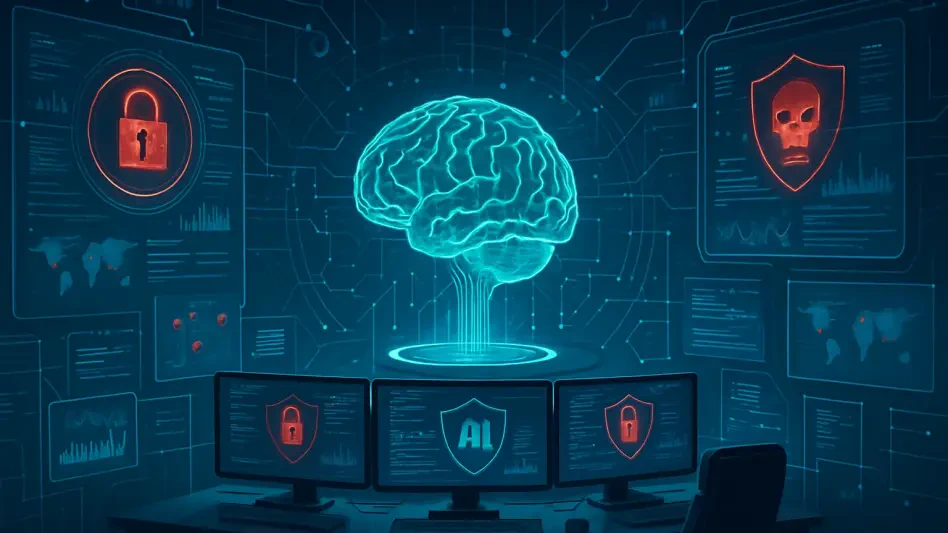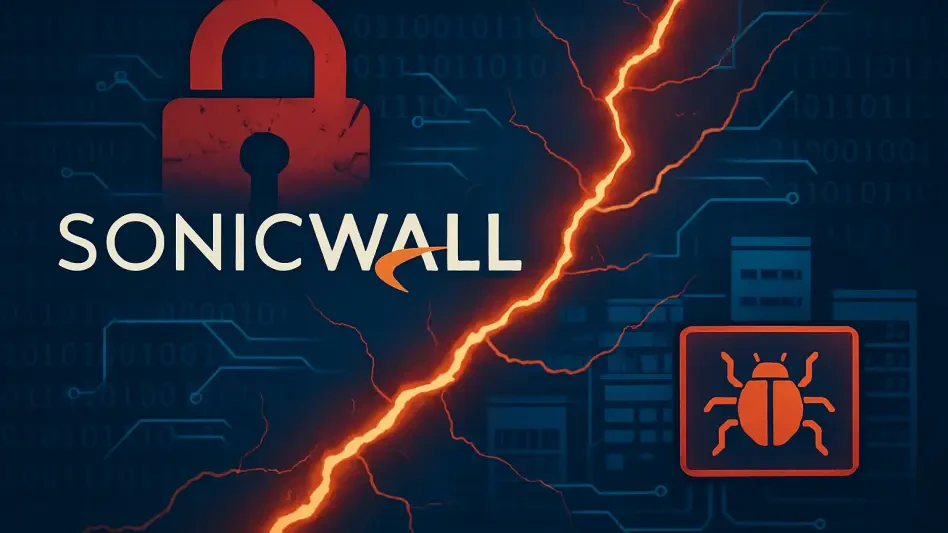In an era where digital landscapes are increasingly riddled with sophisticated cyber threats, security teams face unprecedented challenges in staying ahead of malicious actors who exploit vulnerabilities at lightning speed. The sheer volume and complexity of attacks, from ransomware to data breaches, demand rapid and precise responses, yet traditional methods often fall short due to fragmented data and manual processes. Enter Flashpoint, a pioneering cyber threat intelligence platform that is redefining how investigations are conducted through its cutting-edge AI-powered tools. By integrating artificial intelligence into its Investigations Management module, Flashpoint offers a transformative approach that blends automation with human expertise, enabling analysts to navigate the intricate web of cyber risks more effectively. This innovation addresses critical pain points like time-intensive reporting and disjointed evidence, allowing teams to prioritize strategic analysis over administrative burdens. The impact is profound, promising a new standard in how cybersecurity professionals tackle both immediate crises and long-term threats.
Understanding the Challenges in Cyber Threat Investigations
The Complexity of Modern Threats
Evolving Threat Landscape
The digital realm has become a battleground where cyber threats evolve at a staggering pace, challenging even the most seasoned security teams to keep up with new attack vectors like zero-day exploits and advanced persistent threats. Hackers continuously adapt, leveraging everything from phishing campaigns to dark web marketplaces to orchestrate attacks that can cripple organizations in mere hours. This escalating complexity is compounded by the vast amount of data analysts must sift through, often scattered across disparate sources with little context to connect the dots. Alerts and suspicious activities flood systems daily, requiring immediate attention to prevent escalation, yet the lack of streamlined tools often delays critical decision-making. Flashpoint steps into this chaotic environment with a solution designed to bring order, offering a way to centralize intelligence and provide actionable insights when time is of the essence. The need for such innovation has never been more apparent as businesses grapple with the consequences of delayed responses.
Workflow Bottlenecks
Beyond the sophistication of threats, security teams are bogged down by the inefficiencies of traditional investigation workflows that rely heavily on manual effort, draining valuable time and resources. Tasks such as formatting reports, compiling evidence, and communicating findings to stakeholders often consume hours that could be spent on deeper analysis of threat patterns. These repetitive chores create bottlenecks, especially during high-stakes incidents where every minute counts, leaving analysts overwhelmed and unable to focus on strategic priorities. The pressure to deliver comprehensive insights under tight deadlines further exacerbates the problem, as does the challenge of ensuring all team members are aligned on rapidly evolving situations. Flashpoint recognizes these hurdles and has engineered its platform to alleviate the administrative load, allowing professionals to redirect their focus toward interpreting data and crafting effective countermeasures. This shift is essential for maintaining resilience against an ever-growing array of cyber risks.
The Burden of Data Overload
Fragmented Intelligence Sources
One of the most persistent obstacles in cyber threat investigations is the fragmentation of intelligence sources, which often leaves analysts piecing together a puzzle with missing parts, struggling to form a complete picture of potential risks. Data may come from internal logs, external threat feeds, or obscure corners of the internet, each requiring different tools and expertise to access and interpret. This disjointed approach not only slows down the investigation process but also increases the likelihood of overlooking critical indicators of compromise that could signal an imminent attack. Without a unified system to aggregate and contextualize this information, teams risk operating on incomplete or outdated intelligence, a dangerous prospect in a field where precision is paramount. Flashpoint’s technology tackles this issue head-on by providing a centralized hub where diverse data streams converge, offering clarity amid the chaos and ensuring that no vital clue slips through the cracks during high-pressure scenarios.
Time-Intensive Reporting Demands
Another significant challenge lies in the time-intensive nature of reporting, a necessary yet cumbersome aspect of cyber threat investigations that often diverts attention from active threat mitigation to procedural documentation. Analysts must regularly prepare detailed summaries for stakeholders, a process that involves synthesizing complex technical data into digestible formats while maintaining accuracy and relevance under tight deadlines. This task becomes even more daunting during ongoing incidents, where updates are needed frequently to keep response teams informed, yet the manual effort required can delay critical actions. The constant demand for polished reports drains resources and contributes to burnout among professionals already stretched thin by the demands of their role. Flashpoint’s approach to automating these reporting functions offers a much-needed reprieve, ensuring that updates are generated efficiently without sacrificing quality, thus freeing up analysts to concentrate on proactive defense strategies rather than paperwork.
Flashpoint’s AI-Powered Solution
Core Features and Innovations
Dynamic Workspace Capabilities
Flashpoint’s Investigations Management module introduces a dynamic workspace that reimagines how cyber threat analysis is conducted, seamlessly integrating internal evidence with external intelligence to create a comprehensive view of the threat landscape. Analysts can upload a variety of file types, such as PDFs, screenshots, and documents, combining them with Flashpoint’s curated data from dark web forums and breach logs to form a holistic perspective. Features like selective summarization allow users to focus on specific data categories—whether indicators of compromise, credentials, or actor chatter—ensuring outputs are tailored to the investigation’s unique needs. Additionally, smart suggestions powered by AI guide analysts toward unexplored leads, sparking new angles of inquiry without the need to start from scratch. This environment is designed to mirror real-world workflows, supporting both urgent incident response and in-depth research projects with equal finesse, ultimately enhancing the depth and accuracy of threat assessments.
Automation and Interactivity
A standout aspect of Flashpoint’s platform is its emphasis on automation and interactivity, which together streamline communication and reduce the manual workload that often hampers investigation efficiency. The interactive AI chat feature enables analysts to engage directly with the system, posing questions to clarify findings, validate hypotheses, or draft communications for stakeholders—all within the same interface. Meanwhile, automated reporting capabilities allow for scheduled summaries and exports at daily, weekly, or custom intervals, ensuring consistent updates without the repetitive effort of manual compilation. This dual focus on interactivity and automation minimizes friction in high-pressure scenarios, such as during a breach, where rapid briefing of response teams is critical. By embedding these tools into the core of the investigation process, Flashpoint empowers teams to maintain momentum, focusing on actionable outcomes rather than getting bogged down by procedural tasks that detract from the mission at hand.
Benefits for Security Teams
Enhanced Focus and Scalability
Flashpoint’s AI-powered workspace delivers significant benefits by enabling security teams to shift their focus from mundane administrative tasks to the strategic analysis that drives effective threat mitigation. By automating processes like data summarization and report generation, the platform frees analysts from the burden of formatting and repetitive documentation, allowing them to dedicate more time to interpreting complex threat patterns and devising robust defense strategies. This enhanced focus is particularly valuable in environments where resources are limited, as it amplifies the impact of each team member’s expertise. Moreover, the system’s scalability ensures that investigations can expand in scope without becoming unmanageable, whether addressing a single incident or conducting long-term research into emerging threats. Such flexibility is crucial for organizations facing an unpredictable array of risks, providing a framework that adapts to varying demands while maintaining precision and depth in every analysis.
Team Alignment and Speed
Collaboration stands as a cornerstone of Flashpoint’s innovation, with the platform fostering seamless alignment among stakeholders to accelerate decision-making in the often chaotic realm of cyber threat response. The shared workspace centralizes evidence and AI-generated summaries, ensuring that all team members—regardless of role or location—access the same contextualized intelligence, reducing the need for repeated clarifications or misaligned efforts. This unified approach proves invaluable during critical incidents, where rapid communication with response units can mean the difference between containment and catastrophe. Additionally, the speed at which insights are disseminated through automated updates and shared reports minimizes delays, keeping everyone informed with minimal manual intervention. Flashpoint’s design not only enhances operational efficiency but also builds a cohesive environment where collective action against threats becomes more instinctive, ultimately strengthening an organization’s resilience against digital adversaries.
What Makes Flashpoint Stand Out
Unique Differentiators
Primary Source Intelligence
Flashpoint distinguishes itself from competitors through its reliance on primary source intelligence, drawing from raw, curated data such as stealer logs, breach datasets, and discussions on dark web forums to deliver unparalleled relevance in threat analysis. Unlike generic AI models that often provide broad, less contextual insights, this platform leverages technical indicators of compromise and real-time threat actor chatter to ensure that findings are directly applicable to specific risks faced by organizations. This focus on high-quality, specialized data means analysts receive actionable intelligence tailored to the nuanced nature of cyber threats, rather than sifting through irrelevant or generic outputs. Such precision is vital in a landscape where false positives can waste critical time, and it positions Flashpoint as a trusted partner for security teams needing reliable information to inform their strategies. The depth of this intelligence source sets a new benchmark for what AI can achieve in cybersecurity.
Human Oversight and Privacy
A key differentiator for Flashpoint lies in its commitment to maintaining human oversight and stringent data privacy, addressing widespread concerns about the ethical implications of AI in sensitive investigations. Every AI-generated output is traceable and verifiable, ensuring that analysts remain firmly in control of the decision-making process rather than ceding authority to automated systems. This balance preserves the analytical rigor essential to threat intelligence, reinforcing trust in the platform’s recommendations. Furthermore, privacy is prioritized through a design that keeps uploaded data and user interactions confined within the workspace, preventing external use for model training or other purposes. Such safeguards are critical in an industry handling highly sensitive information, where breaches of confidentiality could have severe repercussions. Flashpoint’s approach not only mitigates risks associated with AI adoption but also aligns with the growing demand for ethical technology solutions in cybersecurity.
Future Implications and Vision
Shaping the Next Era of Threat Intelligence
Looking toward the horizon, Flashpoint’s vision for AI in cyber threat intelligence promises to redefine the very foundation of how security teams operate, embedding automation and insight into every stage of the investigation lifecycle. The goal is a seamless integration where AI acts as an ever-present ally, enhancing capabilities from initial threat detection to final reporting without overshadowing the human judgment that remains central to nuanced analysis. This forward-thinking strategy anticipates a future where the volume and sophistication of attacks will only intensify, necessitating tools that can adapt and scale in real time. By continuously refining its platform to address emerging challenges, Flashpoint aims to empower organizations to anticipate risks before they materialize, shifting the paradigm from reactive defense to proactive prevention. This ambitious outlook underscores the potential for technology to transform cybersecurity into a more predictive and resilient discipline.
Empowering Organizations for Tomorrow
Reflecting on the strides made, Flashpoint’s AI-powered workspace has already proven its worth in streamlining complex investigations, offering a robust foundation that balances automation with human expertise to tackle pressing digital threats. The emphasis on primary source intelligence and privacy-focused design addresses critical gaps in traditional methods, setting a high standard for innovation in the field. As cyber risks continue to evolve, the platform’s past contributions highlight a clear path forward—organizations must embrace such advanced tools to convert raw data into actionable strategies. Exploring tailored demonstrations or pilot programs with solutions like Flashpoint can provide firsthand insight into optimizing threat response and research workflows. By adopting these technologies, security teams can build a stronger, more responsive framework to safeguard against future challenges, ensuring they remain one step ahead in an increasingly hostile digital environment.








